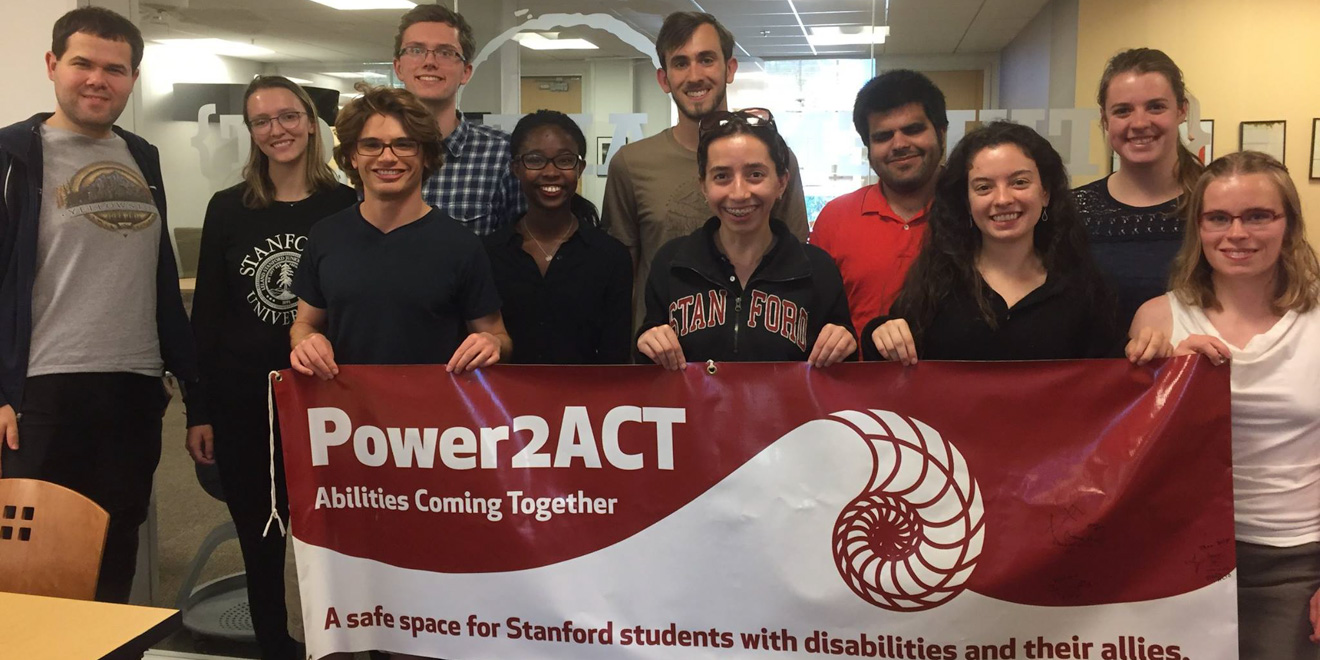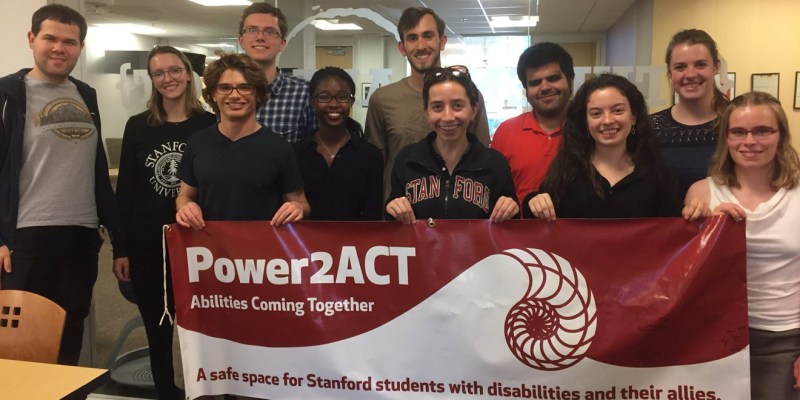The ASSU Executive Cabinet will host events for Stanford Disabilities Week starting Tuesday in an effort to raise awareness of disability issues and advocacy on campus. The week will culminate in the opening of the Abilities Hub, a new spot on campus for people with disabilities as well as the broader community.
The programming was spearheaded by ASSU Cabinet members and Disability Co-leads Zina Jawadi ’18 and Bryce Tuttle ’18, who are former president and president, respectively, of Power2ACT, a disability advocacy organization on campus. Jawadi and Tuttle hope the week’s events foster a safe and inclusive space for students with and without disabilities to discuss everyday challenges faced by disabled students, on and off campus.
Featured events for Stanford Disabilities Week include a documentary screening highlighting disability and its influence on different academic fields, in addition to a presentation by Rabia Belt, a law professor at Stanford with extensive experience on disability. Jawadi and Tuttle hope that the week will serve as an opportunity for all students to feel comfortable discussing disability together.

“Disability is just like any other part of identity,” Tuttle said. “Of course it is personal, but it is not and should not be taboo. We hope the week will inform, entertain and engage students.”
The week will culminate in the much-anticipated opening of the Abilities Hub, a new space located in the Student Services Building on Salvatierra Walk. Power2Act, as well as other student organizations such as Kids with Dreams and the Mental Health and Wellbeing Coalition, advocated for the addition of this on-campus space.
The Abilities Hub will allow people with and without disabilities to come together, socialize, study and hold events.
“By having a physical space for the disability community, we are not only increasing visibility of disability at Stanford but are also emphasizing the role of the disability community and its advocacy initiatives at Stanford.” Jawadi said.
The Abilities Hub will celebrate its kick-off, which is open to the public, on Nov. 2 at 5 pm in the Student Services Building.
Throughout the week, The Daily will also partner with Power2ACT on a “Faces of Ability” initiative, publishing one interview a day centered on the personal story of a student with a disability. By giving a firsthand look into the students’ lives at Stanford, Tuttle and his club aim to spread awareness that those with disabilities are yet another facet of diversity at Stanford and that those with disabilities, as Tuttle puts it, “are [students’] classmates, co-workers and friends.”
Tuttle himself has dyslexia, and Jawadi has hearing loss. Both have utilized many of the resources provided by Stanford and cited the Office of Accessible Education (OAE) and the Schwab Learning Center as two well-funded, well-resourced institutions whose efforts in the realm of disability initially drew them to Stanford.
Despite this, both believe there is still much to do in fostering disability inclusivity on campus. For example, Tuttle pointed out that UC Berkeley has both a Disability Studies minor and six full-fledged disability non-profit organizations assembled together in the Ed Roberts Campus in South Berkeley.
Stanford does offer coursework focused on disability. HUMRTS 104: “Introduction to Disability Studies and Disability Rights,” offered this fall, explores what its course description calls “a relatively new interdisciplinary academic field that examines disability as a social, cultural and political phenomenon.” According to instructor Doron Dorfman, a law student, the class — the first of its kind at Stanford — has over 20 students enrolled.
Another current class offering centers on designing for people with disabilities. CHEMENG 90Q: “Dare to Care: Compassionate Design” is a sophomore seminar that asks students to consider how designers can “empower people of diverse physical abilities and provide them with means of self-expression,” according to a course summary.
Still, Tuttle hopes to make strides towards closing the divide in disability studies offerings he sees between Stanford and Berkeley.
“Stanford should be a place where every student, faculty and staff member knows that disabled people are a part of their community,” he said.“Not as objects to be pitied, accommodated for or avoided but as members of the community with human, not special, needs.”
Contact Tara Shelby at tshelby ‘at’ stanford.edu.
